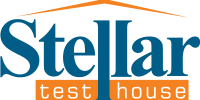Non-destructive testing (NDT) is a specialized method whereby quality/standard of materials and components are inspected in such a manner that their usefulness isn’t changed or destroyed in the midst of the inspection process. NDT also sometimes referred to as Non-destructive examination (NDE) finds extensive use in discovering flaws and defects that originate and exist in the surface and subsurface layers of the resources.
NDT takes part in playing a pivotal role in our everyday life. Its principal aim lies in ensuring safety and reliability. Usually, you’ll find instances of NDT inspection happening in the following constructs.
- Aircraft
- Bridges
- Buildings
- Motor vehicles
- Oil platforms
- Oil refineries
- Pipelines
- Power stations
- Spacecraft
- Trains
NDT excellently manages Quality Assurance and the method of performing the tests is recognized for offering efficacious, accurate results when applied in the right way. To achieve this, you need to gain an in-depth understanding of the several methods on hand, their abilities and shortcomings, detailed know-how of the germane standards and specifications.
Oftentimes, you’ll come across products, materials, and pieces of equipment failing to accomplish their precise design requirements or estimated lifespan. These scenarios are engendered because of unnoticed flaws and imperfections that may call for a premature replacement or an expensive repair. Such undetected defects can lead to the conception of unsafe situations which in turn snowballs into cataclysmic failures and terrible loss of revenue because of a sudden, unforeseen shutdown of plants.
NDT techniques can be utilized during every stage of the construction of an item which takes in research and development, material selection, design, production and quality assurance. While examining the constituent materials and welds, NDT results can feedback with an acceptance, a rejection or a repair proposal. Subsequently, NDT techniques can be applied to scrutinize the item’s integrity and structural outline all through its lifecycle.
NDT Techniques
Over time these techniques have evolved and progressed to become thoroughly detailed with standards, codes and best practices. They include:
- Acoustic Emission Testing (AET)
- Electromagnetic Testing (ET)
- Alternating Current Field Measurement
- Eddy Current Testing (ECT)
- Magnetic Flux Leakage (MFL)
- Film Radiography (FR)
- Infrared Testing (IR)
- Laser Testing Methods (LM)
- Holographic Testing
- Laser Profilometry
- Laser Shearography
- Leak Testing (LT)
- Liquid Penetrant Testing (PT)
- Magnetic Particle Testing (MPT)
- Radiographic Testing (RT)
- Computed Radiography (CR)
- Computed Tomography (CT)
- Digital Radiography (DR)
- Straight Beam
- Ultrasonic Testing (UT)
- Angle Beam
- Automated Ultrasonic Backscatter Technique (AUBT)
- Electromagnetic Acoustic Transducer (EMAT)
- Immersion Testing
- Internal Rotary Inspection System (IRIS)
- Long Range Ultrasonic Testing (LRUT)
- Phased Array Ultrasonic Testing (PAUT)
- Time-of-Flight-Diffraction (TOFD)
- Vibration Analysis (VA)
- Visual Inspection (VI)
Overall, NDT brings forth lots of advantages. Because of the portable nature of the testing piece of equipment, NDT can be performed for manifold iterations on a single component. As a result, a meticulous external and internal assessment of the component can be attained for discernible, damaging flaws.
By and large, NDT is used for the following purposes:
- To prevent accidents
- To reduce the costs of production
- To enhance product reliability
- To ascertain the acceptance of a given requirement
- To provide information on a repair criterion
The disadvantage lies in the fact that the indicative results are frequently qualitative in nature which prompts the tests to be performed in repetitions. Moreover the same test result often has dissimilar interpretations by various inspectors.


